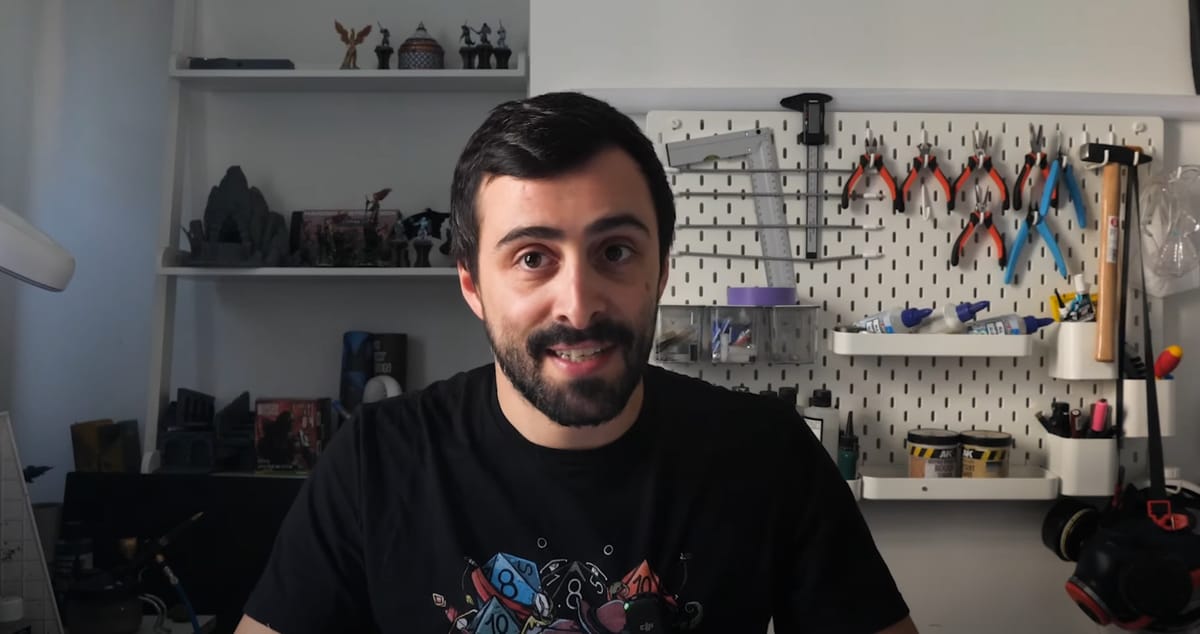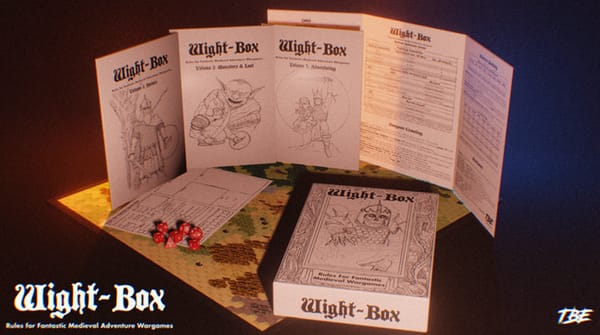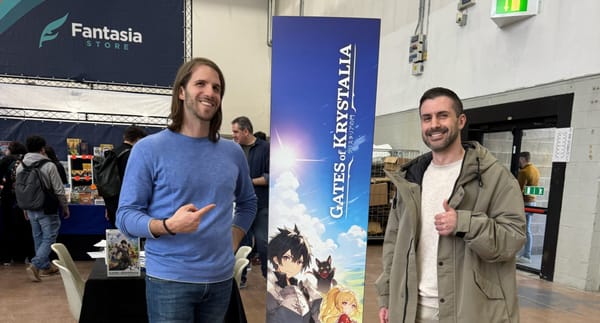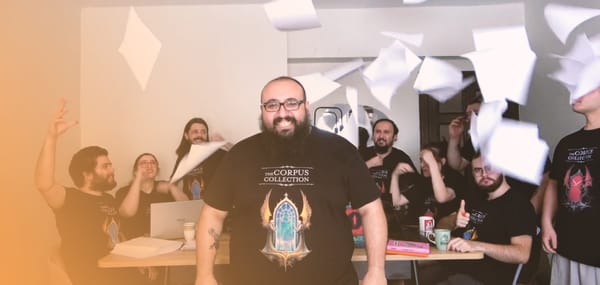From First Roll to Full-Time Creator: How Nathan Horn Turned a Hobby into a Community-Powered RPG Brand

For many creators in the tabletop RPG space, the journey begins with a single session that lights a spark. For Nathan Horn from GM-Worlds, that spark ignited in 2020, when a long-lost friend invited him to play Dungeons & Dragons after years abroad. What began as a simple reunion quickly became a deep passion not just for storytelling, but for building immersive tools that help other Game Masters elevate their games.
In this interview, Nathan walks us through his transformation from first-time DM to the creator of Worlds at a Glance and Encounters at a Glance—two highly successful Kickstarter projects that have carved out a niche in the busy world of 5E content. We explore how he built GM Worlds from scratch, the lessons learned from crowdfunding, and how his personal playstyle shaped the design of his products.
Nathan also shares practical insights on community-building, running ads, handling fulfillment logistics, and why Discord has become the beating heart of his vibrant RPG community. From his early creative experiments to the dream of launching a brick-and-mortar game store, this is a candid and inspiring look behind the scenes of one of the most promising new voices in the TTRPG publishing space.
Whether you're a veteran GM thinking about making your first product or a curious fan of innovative RPG tools, Nathan's story is packed with lessons and takeaways you won’t want to miss.
Onwards!
Could you tell us about your very first experience with tabletop RPGs? What got you hooked?
My first experience was back in 2020 when I came back to Belgium after having worked in China and Malaysia for 4 years. It was my childhood friend who I hadn’t seen since forever that said we should catch up and proposed to play D&D with a couple of his friends. I got hooked ever since!
What inspired you to become a Game Master, and how did your approach evolve over time?
The appeal of being able to craft your own story that your friends can wade through and see them enjoy, laugh and have fun discovering what you’ve written was something that really excited me. Being able to put smiles on people faces from something you created, is really amazing.
My first session as a DM was for a group of strangers that I had met only once in a session zero, after they responded to a “Looking for players” request I had hung up across town to see if any of the people in my neighborhood were up for playing D&D. I did that because I wanted to have some DM practice before running a homebrew for my friends and that felt like the best way to do it!
Before launching Game Master Worlds, were you already creating content for your own games? If so, what kind of tools or materials did you design?
I’ve created 3 things top of mind, one of which was the early version of Worlds at a glance: Towns & Villages, another was an early version of Encounters at a glance: Into the wild and a third tool was an ocean navigation mechanic that I still want to do something with someday as perhaps a next Kickstarter!
What was the tipping point where you thought, “Maybe I could turn this into something more than a hobby”?
When we had a first successful Kickstarter, I learned that I loved the entire process from start to finish and if I could do this as a way to continue making products out of ideas from my head, I’d have to keep chasing it and give it a real shot!
How did your personal gaming style influence the design choices behind Worlds at a Glance and Encounters at a Glance?
I’m always optimizing the way I run my own games because I don’t want my players to be restricted by my prep. If I can make sure that my players know I’m always prepared to deal with anything they want to do, then I increase the chances of them having a fun session! And that has ultimately always been my goal, getting my players to enjoy sessions without disruptions, waiting times or lack of creativity!
What were the biggest challenges you faced when transitioning from GM-ing for friends to building a business around RPG content?
It’s been the challenges you didn’t know you’d face that appear once you take on the “business” side of building a product and managing a community. We all kind of live in a bubble, and as we grow, that bubble lets in more experiences, challenges, and things you didn’t know you needed to learn.
But to sum it up to one thing, the biggest challenge is “not knowing”. Not knowing if your product is going to be well received, not knowing if you’ll be able to reach your funding goal, not knowing if the ads are going to perform well, not knowing if you’ll be able to keep coming up with good ideas, …
How did you first learn about crowdfunding, and what made you decide that Kickstarter was the right platform for your first project?
I first really got in touch with crowdfunding when I worked for a company that provided its services to help crowdfunding platforms with the A-Z of crowdfunding. From ads, to marketing to manufacturing and logistics.
It was kind of a skunkworks project from a power-socket company so everyone in the team was very new and while I did learn a lot from it, I had to mostly figure things out myself. Years after that job, I decided I’d go for Kickstarter as it made most sense for the niche I’m in, and that’s how I got onto the Kickstarter platform!
Many creators struggle with scope. How did you define what to include (and exclude) in your debut project, Towns & Villages?
We started with the basics, and always worked towards adding things that would increase the value of Worlds at a glance: Towns & Villages. I believe we have an amazing core product, then when it came down to it, I didn’t want to just sell a book.
I had this one chance to create something extremely useful, have it produced with a Kickstarter I planned on going all in for, so what could I add to my ideal version of Worlds at a glance: Towns & Villages that would make the whole package, even better? That’s how we created the shop card handouts, notebook with stickers, wet-erase town maps, DM screen and initiative trackers.
We always weighed the effort and cost of a certain product before deciding wether or not to include it because we also wanted to reasonably price the entire box-set. Compared to what most other Kickstarters offer at our price point, I believe we did a really great job!
Towns & Villages was a huge success for a first-time campaigner. What do you think contributed most to that initial momentum?
The community and the concept. It was a really well received concept and it answered a painpoint many DMs were having, so it was somethingt that really gathered a lot of support when we showed it to people.
What lessons did you learn from that campaign that you applied to Encounters at a Glance?
The biggest one is to keep logistics simple. We had handmade products in Belgium and The Netherlands, and having those sent out to distribution centers near the end of the shipping process, was a mistake that has caused me months of logistical resolutions. This time we are centralising all products in a warehouse before shipping out to sea, so that the warehouse can already pack everything together, so the fulfillment hubs can process it all at once without any delays or issues.
The second thing was to get the right fulfillment hubs. The most important one for long term colaboration is a backend you can log into and check your orders. If the hub doesn’t offer that, you’ll waste so much time on email followups.
What’s your personal process when preparing a Kickstarter campaign — from concept to launch?
I ask myself:
- What do I want to make?
- Would it help others in any significant way?
- Can I improve upon similar products?
- If I can say yes to those 3 questions, the creative juices start flowing and as I start working on it, more and more ideas come into my head that make it into the product!
The visual presentation of your projects is top-notch. Do you handle the design and layout yourself, or do you work with a team?
I have done all the layout myself, the artwork illustrations were all via commissions. We used artists from all over the world and one tip I can give if you want to avoid AI, is to ask for sketches of their process. It shows they aren’t using AI and it gives you progress picks to share with your backers and community! A bonus tip: Check if their artstation or art portfolio dates longer back than 2022.
Running the community and handling the retail sales was something that I couldn’t do on my own which is where my partner (and a bunch of amazing volunteers) came into play. Shiu runs all the retail aspects of our business and oversees a big part of the community and socials, while our volunteers work solely on the communtiy part of Grunk’s Tavern, our discord server!
How did you initially build your audience before launching your first Kickstarter? Was it through social media, actual play videos, Reddit, or something else?
We did it through ads and by going to conventions to promote the product but also the community. What I wanted to avoid was a community that goes silent after the Kickstarter, so we made sure that we were pouring our time and effort into a community that had something other going for it than just the product.
We host events, games, online D&D sessions and even offline meetups (in Belgium and The Netherlands) to keep our community from going silent when a Kickstarter is over. It’s what helped the community be so vibrant and alive all this time.
What’s your approach to community-building today? Is there a specific platform that works best for you?
Discord all the way. It has so many helpful tools and organizational options to ensure we can cater to the needs and wants of our community and it allows for super easy collaboration with other community members if you want to get others to help build the community!
Did you run paid ads (Meta, Google, etc.) for either of your campaigns? If so, what strategies worked best?
We ran Meta ads and the strategy that worked best for us was to try different audiences and focus on testing different creatives. Since we have quite a feature-packed product, explainer videos worked best for us!
What kind of content performs best for you on social media — behind-the-scenes posts, visual previews, GM advice?
This is something we’re still trying to figure out so I can’t say yet. Right now our social media isn’t what I want it to be, we’ve created some fun videos and they’ve gathered some views, but the goal was to make sure that our socials weren’t inactive during the Kickstarter, so the strategy was to create easy-to-make videos that were fun to watch, but we want to transition into more informational videos because those better align with the outwards image we want people to know us by.
A lot of creators struggle to reach international audiences. How did you manage to break beyond the Belgian market?
Running ads and creating a community. I believe one thing we will do more to grow our international community, is go to international conventions now that we have a product, to put ourselves out there even more!
Have you experimented with using AI tools (like ChatGPT, Midjourney, etc.) in your creative process — for writing, visuals, or organizing content? If so, how has it impacted your workflow?
I find that AI tools are very superficial. They work great, but I’ve always had my own method of coming up with new and creative ideas, and I found that if I tried something like chatgpt, everything it spews out is really superficial and bland.
Everyone has their own method, but I prefer to not be influenced by other people or in this case AI, when coming up with new ideas. I like to just let the ideas come to me, or sit down and think about the value my core concept has, and what could add more value to it. That has always worked for me and its my prefered way of working.
With Encounters at a Glance: Into the Wild already surpassing its goal, what’s next for Game Master Worlds?
We want to open a local game store in 2026, which is fully underway, and launch a sequal to Worlds at a glance: Towns & Villages now that we’ve collected a good amount of feedback from our initial backers!
Are there any aspects of running a Kickstarter that you still find challenging or exhausting, even after multiple campaigns?
Customer support. I do it all by myself, and its challenging at times because I want to be super fast at answering questions, make sure that any problems are resolved quickly and I take every message to heart cause I really care about those who support us, which makes it tough when someone contacts you because they didn’t get their package, it got lost or stolen and when you don’t have a good fulfillment hub, solving such issues is really time consuming and slow which is why we’re really happy that we have good fulfillment centers for Encounters at a glance since that’ll make things much easier in terms of customer support.
Finally, what advice would you give to creators who are passionate GMs and thinking about making their first RPG product?
- Think of the value your product offers and how it can offer even more with accessories or add-ons.
- Even if you have a great idea, make sure it doesn’t resemble 90% of what is already out there, because it’s really hardt to stand out if you look the same like others. People really minimize things when they see yet another product pass by on their socials.
- Make sure you have a ton of creatives that cover different pain points of your potential customers, so you can see which ones are well received, because they will be your first indication of which elements from your product work and which ones don’t.
- Inform yourself on the best practices by using services such as Launchboom (I learned everything I know from them) to give yourself the best chance of succeeding.
Attention! If you visit www.gm-worlds.com and use the code “RPGDrop,” you will receive a 10% discount!
Thanks, Nathan :)





